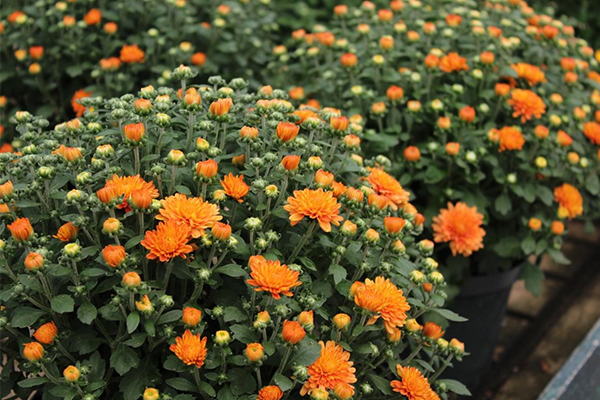Chrysanthemums
5 Care Tips to Keep Your Mums Healthy Throughout the Year
Chrysanthemums are the highlight of the garden in late summer and fall when many other flowers have faded. These hardy plants are native to China, Japan, Northern Africa and Southern Europe. They belong to the daisy family Compositae. All make great cut flowers and most have a pleasant fragrance.
1. Choose the type that best suits your landscape.
Both annual and perennial types are available. Their flowers come in every color except blue. Those with showy flower heads such as pompons, quill and spider types are quite popular, but the graceful single and double types are also well worth growing. All are suitable for borders and cutting gardens and pair well with fall annuals, perennials and ornamental grasses.
2. Select an ideal location to plant.
Garden mums require a minimum amount of care. Choose a site in full sun that is fertile and moist but has well-drained soil. Chrysanthemums need plenty of room to grow. Mums benefit from a rich soil composed of an abundant supply of animal manure or compost and commercial fertilizer. The soil should be made firm around the mum.
3. Provide Care Before, During, & After Bloom Period
Hardy varieties are pinched regularly until the middle or end of July; the tips are taken off all shoots as soon as they attain a length of 6”. Water freely in dry weather, and apply a balanced liquid fertilizer every 7-10 days from mid-summer until buds begin to show color. When mums have finished blooming for the season cover them with 3 inches of straw or mulch. They may even be cut down to soil level after blooming.
4. Regularly inspect your plants.
Mums have very little problems when it comes to pests and disease, but it's always helpful to keep a watchful eye and treat any issues as soon as possible. A few of the pests that could affect mums are: Aphids, Fungus Gnats, Leafminers, Slugs, Spider Mites, Thrips, & Worms. Possible common disease that could affects mums include: Bacterial Wilts, Botrytis, Powdery Mildew, Pythium, Rhizoctonia, & Rusts. Though not very common, if you're having trouble with your plants, we're happy to help! Stop by any of our garden centers for advice and treatment tips.
5. Propagate & Enjoy!
Divide clumps in fall or early spring. You can also root cuttings. For late flowering varieties, take the cuttings after the flowers have faded. For earlier varieties take cuttings in early spring. Root the cuttings in a soilless potting mix with a layer of dry sand on the surface. Cuttings rooted in winter should be protected indoors or in a cold frame until spring, when they can be hardened off.
